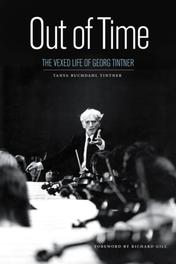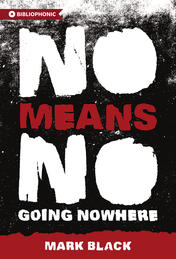Composers & Musicians
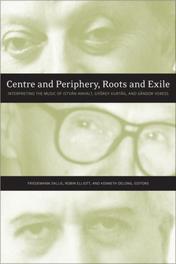
Centre and Periphery, Roots and Exile
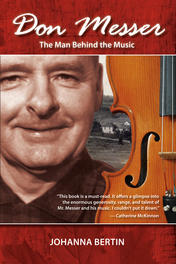
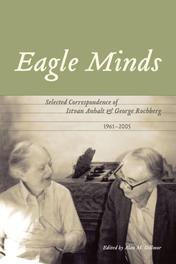
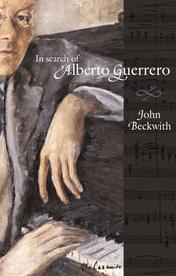
Excerpt from Chapter 4, In Search of Alberto Guerrero by John Beckwith
“A Great Piano Town”: The Five Piano Ensemble
The Swiss-born pianist and teacher Pierre Souvairan, a leading figure in the Toronto musical scene starting in the mid-1950s, used to say that the city as he found it when he arrived was a “great piano town. “ Before, during, and after World War II, Toronto offered a notable roster of senior piano instructors. At the Toronto Conservatory of Music, along with Guerrero, were Margaret Miller Brown, B. Hayunga Carman, Reginald Godden, Viggo Kihl, Weldon Kilburn, Lubka Kolessa, Ernest Seitz, and Paul Wells--Mona Bates ran a highly successful independent studio. All had distinguished credentials and produced outstanding pupils; several (particularly Godden, Kolessa, and Seitz) were, like Guerrero, active on the concert stage and in broadcasting. Pianists outnumbered other instrumentalists several times over in conservatory enrolments, and the city's reputation as a centre of piano manufacture, while starting to decline in favour of the radio and the phonograph, was still formidable (Heintzman and Mason & Risch, the two major firms, lasted into the early 1950s). The leading international piano soloists all included Toronto in their tour itineraries (Vladimir Horowitz made virtually annual appearances in Massey Hall during my student years, for example).
A curious phenomenon was the popularity of multiple piano concerts. Piano duo teams were of course common, not just in Toronto, with their arrangements from all areas of music literature. But how many cities in that era managed to cultivate both a five-piano ensemble and a ten-piano ensemble? Guerrero's long-time association with the former, in a period when he was also mounting intimate performances of off-beat solo repertoire, is a striking parallel to his emphasis on zarzuela composition simultaneously with his groundbreaking new-music efforts in Chile years before: producing music for wide popular appeal and for connoisseurs did not represent an either-or choice for him; both were desirable and important.
The Five Piano Ensemble made its inaugural appearance in 1926, and lasted until at least 1940. The Ten Piano group came into existence in 1931 under Mona Bates's direction, seemingly as a rival effort. Both teams had strong support from Toronto piano dealers, the former from Heintzman and Company and the latter from the T. Eaton Company, local representatives of Steinway and Sons. The appearance of a large assemblage of grand pianos on stage was arresting, the locales were huge (Massey Hall, Varsity Arena, and even the city's largest sports venue, Maple Leaf Gardens), and the repertoire of the Five Piano group featured spectacular arrangements of popular piano favorites such as Chopin's Polonaise in A-flat, and of orchestral standbys such as Strauss's Blue Danube Waltz and Chabrier's España: it was all well calculated to help sell instruments. A lengthy magazine article describes one of the first concerts and includes a striking photo of the group.
This event took place at Massey Hall on 27 April 1927. The performers were Nora Drewett de Kresz, Reginald Stewart, Viggo Kihl, Ernest Seitz, and Guerrero; Ernest MacMillan conducted. As became standard programming procedure, a series of arrangements was interspersed with solos by individual members. In this all-Chopin program, the arrangements included the two most popular Polonaises--in A-flat, Opus 53, and in A (“Military”), Opus 40, no. 1--and Guerrero's solos were the Impromptu in F-sharp, no. 2, Opus 36, and the “Black Key” Etude in G-flat, Opus 10, no. 5. For a concert in the same hall on 2 November 1927, the arrangements (should one rather call them projections?) were again all of piano originals, the only quasi-exception being Paganini's La chasse (originally arranged--for one piano only--by Liszt); solo offerings included Rachmaninov's Prelude in g, Debussy's Minstrels, Chopin's Waltz in e, op. posth. , and A Mountain Brook by the then-novel composer Cyril Scott. For Schumann's Carnaval, a reviewer noted,”[the five pianists] opened in unison, and also gave the closing march in majestic unison, and took turns in playing the other short sketches. “ Later concerts were not conducted.
At Varsity Arena on 22 October 1928, Scott Malcolm and Reginald Godden replaced Kihl and Drewett, and the program included La campanella (Paganini-Liszt) and the Chabrier. At Massey Hall on 23 November the same year, Liszt's Hungarian Rhapsody no. 15 and the ballet music from Rosamunde by Schubert were the featured group numbers. After their 15 March 1929 concert, which included Wagner's Ride of the Valkyries, the Scherzo from Mendelssohn's Midsummer Night's Dream music, and Strauss's Beautiful Blue Danube Waltz, a reviewer stated that the ensemble “has now become an institution in Toronto, and a popular one judging by the enthusiasm of the large crowds which attend its concerts. “ After the group's concert of 22 November the same year, the Conservatory Quarterly Review noted that “the Five Piano Ensemble . . . has evidently come to stay,” and quoted a Globe review of the event: “Repetitions, recalls and encores were past counting. The. .. synchronizing was extraordinary throughout. “
In Eaton Auditorium on 5 May 1932, four members of the ensemble (Guerrero, Nora Drewett, Scott Malcolm, and Viggo Kihl) joined a small string orchestra in a performance of the Vivaldi-Bach Concerto in a for four keyboards and strings; the conductor was Géza de Kresz.
The same four, joined by Godden, appeared in Maple Leaf Gardens, on 27 November 1935, with a larger component of transcriptions in their program: the Beautiful Blue Danube again, Tchaikovsky's “Waltz of the Flowers” from The Nutcracker, Rimsky-Korsakov's Capriccio espagnol, two Liszt pieces, and a five-keyboard version of Cyril Scott's arrangement of the Invention in F Major by J. S. Bach. As composed by Bach, this glittering little piece lasts about thirty seconds in performance; one imagines it on this occasion as the inflation of an inflation. (Less than a week previously, Guerrero had played the complete cycle of Bach's Inventions and Sinfonias in a recital at Malloney's. Somehow he managed to compartmentalize his opposing roles as Bach purist and multi-piano team member. )
The ensemble had given another concert in the Gardens on 24 April the same year, and in 1936 they were again heard twice, in Varsity Arena, the dates being 5 May and 9 November. On 5 May and 8 September 1938 they appeared at Varsity Arena, both times with the Toronto Philharmonic, the orchestra of the summer Promenade Concerts. The conductor, Reginald Stewart, was a member of the ensemble. On 5 May he led a performance of the Vivaldi-Bach Concerto in a, with his colleagues Godden, Malcolm, Seitz, and Guerrero, and then joined them in a group without orchestra (the Bach-Scott Invention in F, Liszt's arrangement of Schubert's “Hark, Hark, the Lark,” and Stravinsky's “Danse infernale”). At the 8 September concert, the Ensemble replaced an indisposed guest soloist on two days' notice, and offered two pianos-only groups, highlighted by the Mendelssohn Scherzo and Weber's Invitation to the Dance. A further concert in Massey Hall took place on 24 November 1939. For an engagement in London, Ontario, on 14 February 1940, the ensemble members were again Godden, Guerrero, Malcolm, Seitz, and Stewart, and the program included arrangements of Bach's Toccata and Fugue in d, the “Polovtzian dances” from Prince Igor by Borodin, and Debussy's orchestral Nocturne no. 2 (Fêtes). This is the latest date for which I have located documentation.
Guerrero was the one constant member of the ensemble throughout its approximately thirteen-year existence, which may indicate that he played a leadership or organizational role. The scores of the ensemble's arrangements have not so far come to light, if in fact they were ever notated. Intriguing questions remain: who was the arranger? Was the repertoire selected and arranged by some mutual process, or did Guerrero or one of the others make assignments? And was MacMillan involved at the start in arranging for the ensemble as well as conducting it? The ensemble and its brief popularity amount to an underexplored episode in the music annals of Toronto, in which Alberto Guerrero was closely involved.
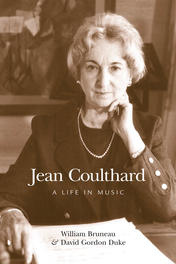
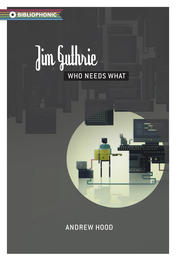
When I bug Aaron Riches for his memories of the young James Edward Guthrie he met at Waverley Drive PS, he laughs: “Jim had the exact same haircut as he does now. He really looked the same. Jim hasn’t changed. I think he was born how he is.
“Of course…” Aaron tempers his amusement some. “Everyone grows.”
Three quarters of what would become Royal City met at this time, at Waverley. Both Aaron and Jim are Guelph-born. Simon Osborne, bassist for that band and player on most of Jim’s albums, moved from Ottawa in Grade 7.
Simon was into skateboarding and made friends that way after relocating. Through a skating friend he heard about this “cool guy from across the street” who had a Vision Psycho Stick and could do kickflips. “So I met Jim,” he remembers, “and he could do the kickflips that were described. And I thought Jim seemed pretty awesome, too.”
The earliest first Jimpression comes from Steve McCuen, childhood chum and collaborator on a hard-to-place project, Mandrills. In “Rap Song 2000,” Steve rhymes his memories of first meeting Jim: “I can remember being back in grade 3 / It’s in September—’82—it’s where I first met Guthrie… He sold his Mite-Y-Mite bike to my younger brother Mike / and told us how to ghost ride the damn bike.”
“I just remember getting huge laughs,” Jim recalls when I ask him about ghost riding, a trick where you leave a moving bike and it continues independent of you. “You did that and everyone’d be on the grass. If you could make a bunch of kids laugh by having skill enough to jump off your bike in such a way that it coasts silently… I was one of those kids who had, like, no confidence, but who had hand-eye coordination.
“And I could throw a rock,” he goes on, “Like, really far. Or straight up in the air and everyone would be like, ‘Holy shit!’ You couldn’t even see it anymore. And it would take 30 seconds to hit the ground. I remember moments like that. Just doing little things that gained immediate [attention].
“Even still… I went to the cottage with a few people [recently] and I pulled out the ol’ rock throwin’ arm, and I still had it. I always attributed it to a good, stout frame. And I have these whippy, elasticy arms. I think there’s a real kind of physics there. I think if you got somebody to measure my body, they’d be like, ‘This is optimal. These are the dimensions you’d use to build one of those David and Goliath slingshots.’
“I made one of those [slingshots], too. When I was younger I used to be really crafty and self-reliant. But the whole while I was trying to choke down a stutter.”
Two years older than Jim, Stephen Evans met Jim on the block. “He was about 12 or 13,” he says. “I think I remember him stammering a lot and being quite shy, but he was also very athletic. He was built like a little gymnast. He was an amazing skateboarder and he was an amazing breakdancer. Well, not an amazing breakdancer, but he spent time learning that stuff. He could moonwalk. I didn’t know anybody who could moonwalk.
“He moves so beautifully, this little man.”
But Stephen stresses that Jim was never a show-off. “I think he just liked devoting himself to learning something and seeing if he could pull it off.”
Jim’s character, like his music, is a unique balance of reservation and razzmatazz. He’s never been someone to trumpet a project, but the work itself, and his dedication to it, has always had such a visible aplomb that drawing attention is inevitable.
To hear it from Jim’s friends, the guy stood out in adolescence; to hear it from Jim, it was the opposite. “When I was younger,” he says, “I didn’t like being the centre of attention because normally, when I was the centre of attention, I was stuttering in front of a class. So I sort of learned being the centre of attention doesn’t always feel good.
“I used to think of myself as a bit of a Seabiscuit,” he says. “In as much as Seabiscuit is sort of a lame horse that nobody wanted. I wasn’t super book smart when I was younger, and I had that stutter, and when I was born my legs were all kinda twisted and turned in. I had to wear casts on my legs for the first little bit of my life. I was always just sorta short and runty. Now that’s all in the past, and I guess it was a big deal at the time. Now, when I put [those issues] under a microscope, they all seem like big little things, a great deal of who I was when I was younger.
“But I learned a lot from those early struggles and it sort of showed me how to adapt and reinvent myself over the years.”
